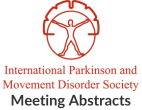Impact of postural stability estimation in HY scale. (Pull test Vs. limits of stability assessment)
Objective: Stability evaluation is of much value for staging the disease according to the Hoehn and Yahr (HY) scale. We propose to correlate a dynamic…No deleterious effect of unilateral Gamma Knife thalamotomy on gait and posture in patients with essential tremor
Objective: We aimed to describe specific features of gait disorders and postural instability in patients with severe essential tremor (ET), and to evaluate the effect…Usefulness of Sway Area for Assessing Balance and Stability in People with Sporadic Adult Onset Cerebellar Ataxia
Objective: To assess usefulness of sway area using wearable devices by (1) comparison of variables with another neurodegenerative diseases (2) assessing correlation with the Scale…Relationship of 10-Meter Walk Test to balance performance in Parkinson’s disease patients as a predictor of falls
Objective: This study aimed to clarify the relationship between the 10-Meter Walk Test (10-MWT) and balance performance in PD. Background: Patients with Parkinson's disease (PD)…Effects of Aquatic Physical Therapy on Parkinson’s disease under a vision of the International Classification of Functioning, Disability and Health (ICF)
Objective: The objective of the study was to verify the effects of APT on functional abilities of people with PD. Background: In the biopsychosocial model…Atypical Response to Apomorphine in a Patient with Multiple System Atrophy
Objective: Multiple system atrophy (MSA) is a sporadic neurodegenerative disease clinically characterized by cerebellar signs, parkinsonism and autonomic dysfunction. MSA is classified into two sub-types;…What activities increase the risk of falling in atypical parkinsonian syndromes? A comparative study with Parkinson’s disease
Objective: To determine balance confidence (FoF) in patients with PD and APS by utilizing the 16-items Activities-Specific Balance Confidence Scale (ABC-16), and identify specific activities…Consensus for the measurement of the camptocormia angle
Objective: To define a consensus-based and clinically applicable method for measuring the camptocormia angle. Background: Camptocormia is characterized by a pathological forward bending of the…Postural Sway Complexity as a Measure of Motor Functionality in Fragile X Premutation Carriers
Objective: To assess changes in motor functionality of FMR1 premutation carriers at risk of developing Fragile X Associated Tremor/Ataxia Syndrome(FXTAS), through traditional and complexity-based measures…Motor Heterogeneity in Parkinson’s Disease: A Bayesian Perspective
Objective: To identify motor symptom subtypes in idiopathic Parkinson’s disease (PD) using a Bayesian analytic approach to latent profile analysis. Background: Several subtypes of Parkinson’s…
- « Previous Page
- 1
- …
- 10
- 11
- 12
- 13
- 14
- …
- 19
- Next Page »
